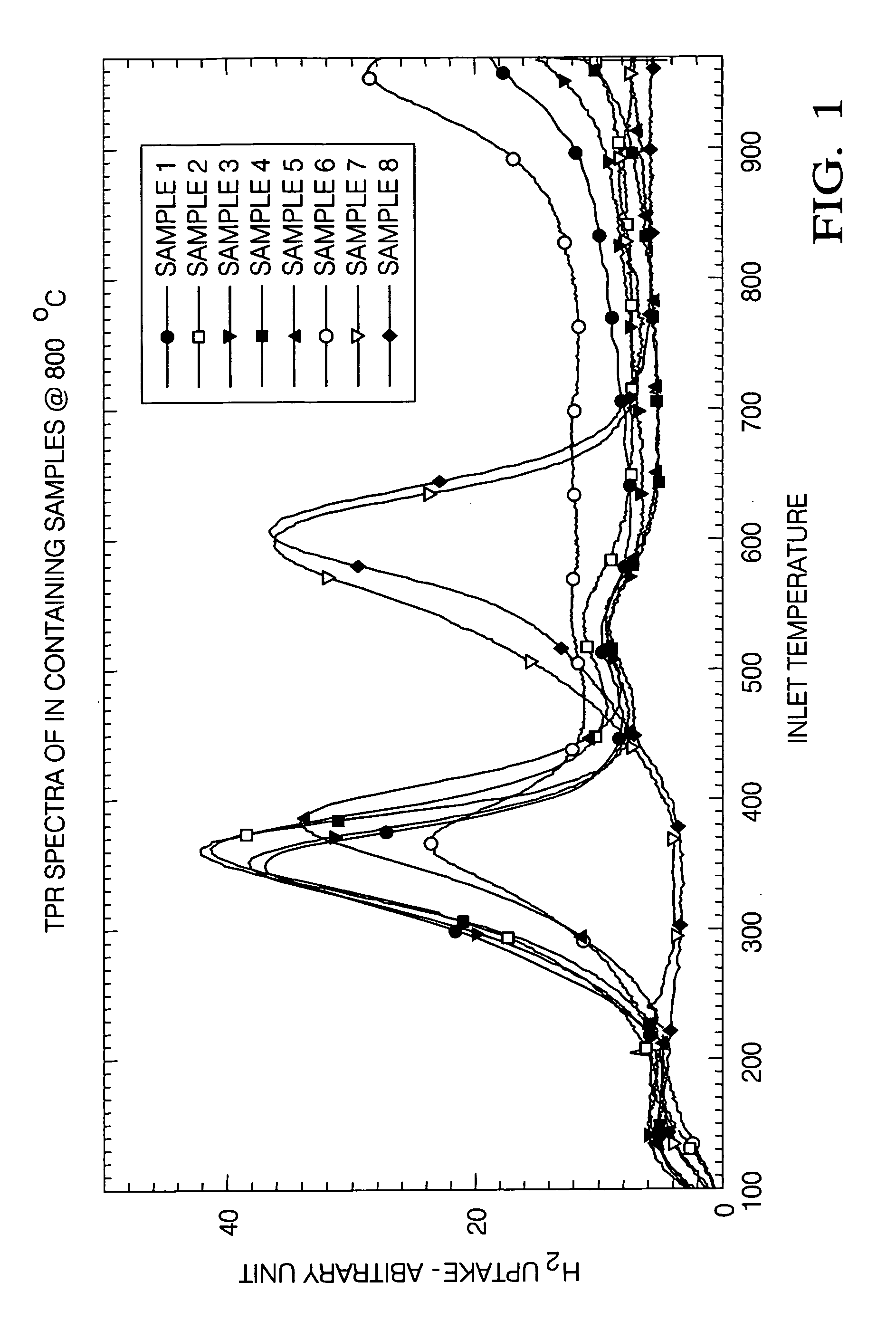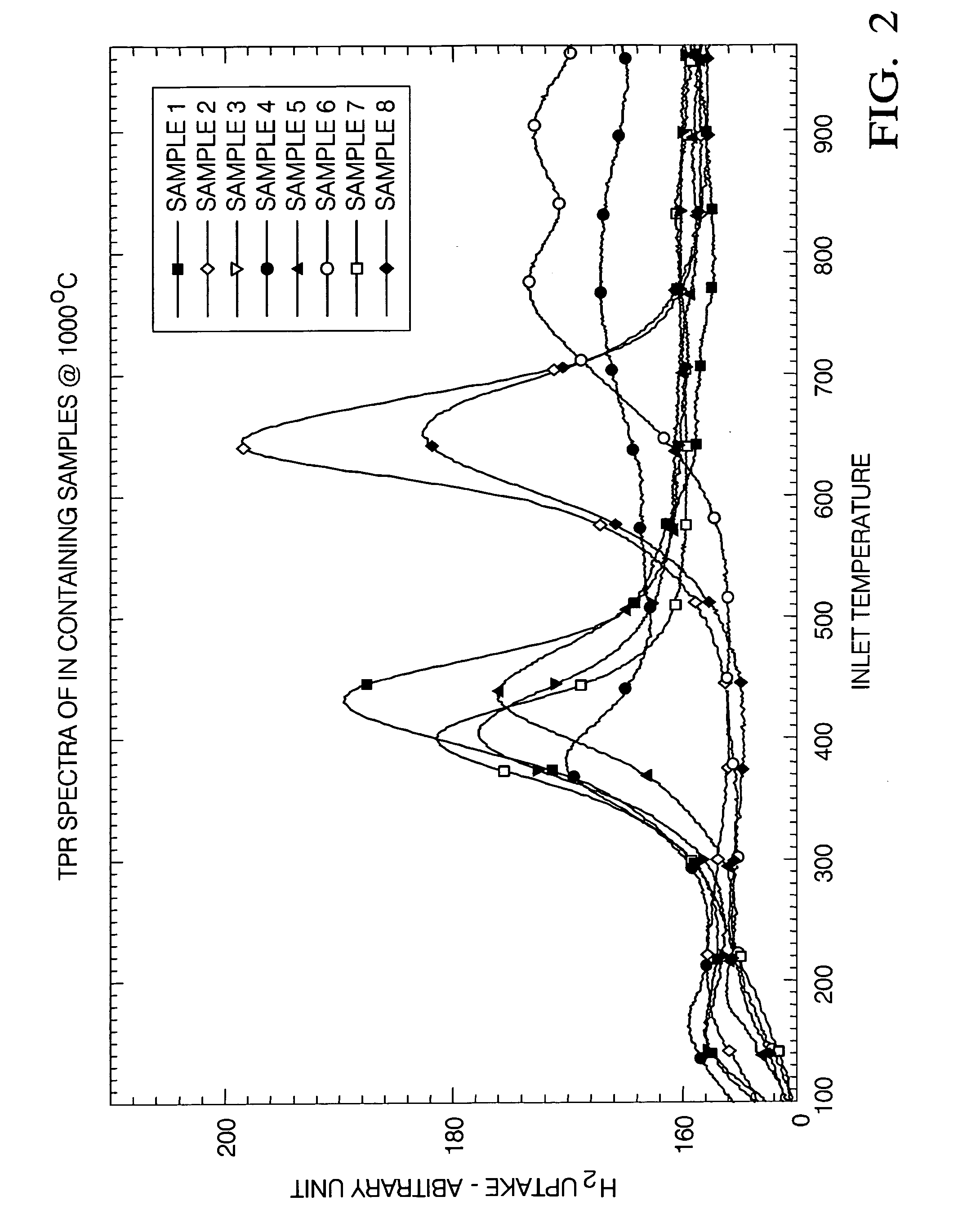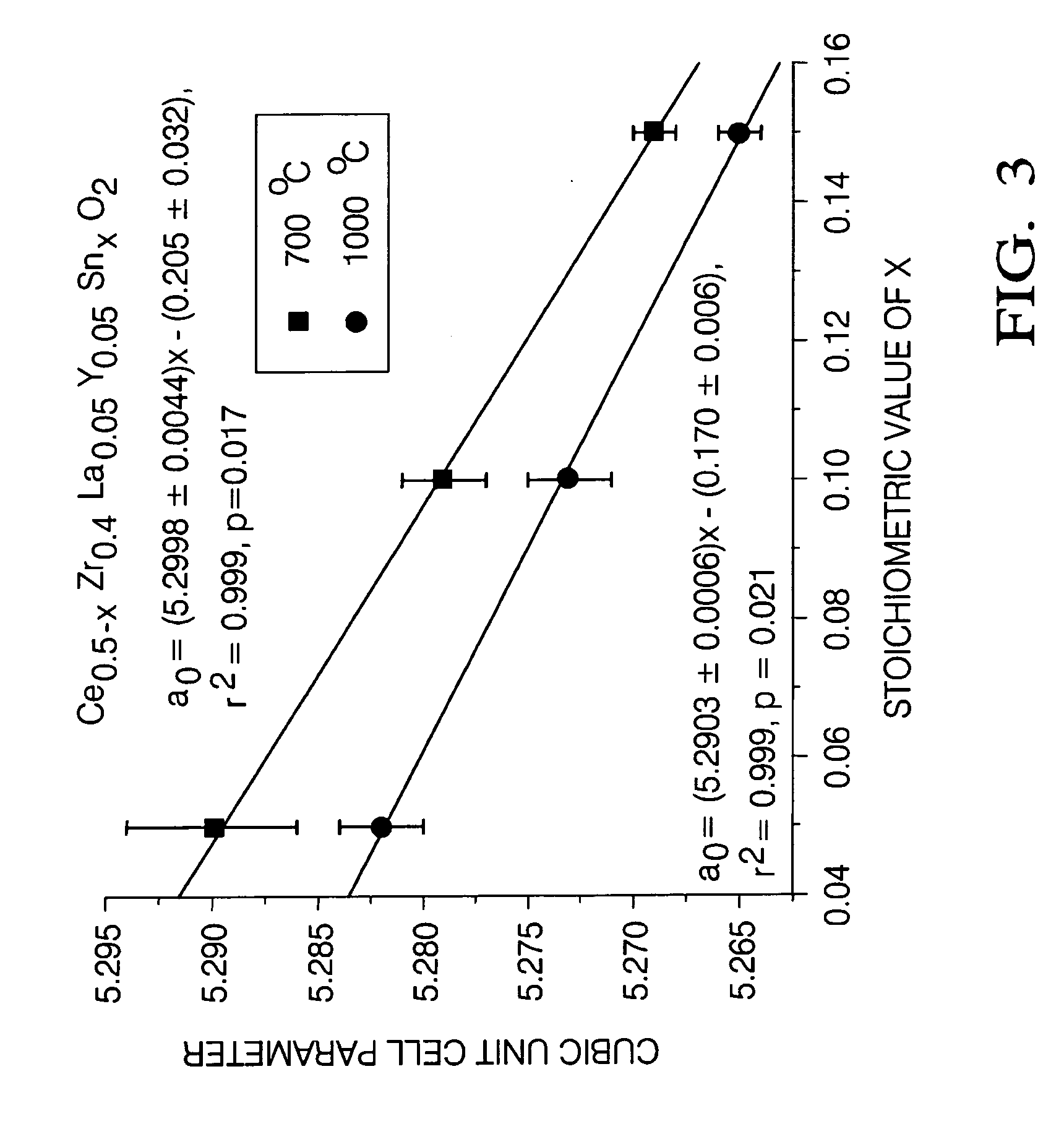Ce-Zr based solid solutions and methods for making and using the same
a technology of solid solutions and cezr, applied in the direction of phosphorus compounds, inorganic chemistry, using liquid separation agents, etc., can solve the problems of loss of os/oic properties, and achieve the effect of reducing the concentration and reducing the concentration of at least one contaminan
- Summary
- Abstract
- Description
- Claims
- Application Information
AI Technical Summary
Benefits of technology
Problems solved by technology
Method used
Image
Examples
working examples
Example 1
Preparation of Zr0.627Ce0.250La0.042Y0.061In0.020O1.939 Solid Solution
[0031] 143.4 grams (g) of 36.97 weight percent (wt %) ZrO(NO3)2 solution, 39.87 g of Ce(NO3)3.6H2O, 6.65 g of La(NO3)3.6H2O, 8.39 g of Y(NO3)3.6H2O, and 2.81 g of In(NO3)3.4H2O were dissolved in 500 milliliters (ml) of deionized water. The resulting homogeneous solution was added slowly under vigorous stirring to 1.35 liters (L) of 4 molar (M) ammonium hydroxide (NH4OH) to precipitate mixed metal hydrous oxides. The reaction mixture was additionally stirred for 3 hours. The precipitate was filtered, washed with deionized water, and then dried at 110° C. for 12 hours. Dried powder was ground, and calcined at 800° C. for 6 hours. The resultant solid solution had a cubic structure with lattice constant of 5.227(4) Angstroms (A) by x-ray diffraction (XRD) analysis. The surface area was 46.6 square meters per gram (m2 / g) for the as-prepared sample, and 13.4 m2 / g after aging for 6 hours at 1,000° C. in static...
example 2
Preparation of Zr0.620Ce0.248La0.017Y0.096In0.019O1.934 Solid Solution
[0032] The preparation was the same as for Example 1, but used 143.4 g of 36.97 wt % ZrO(NO3)2 solution, 39.87 g of Ce(NO3)3.6H2O, 2.66 g of La(NO3)3.6H2O, 13.42 g of Y(NO3)3.6H2O, and 2.81 g of In(NO3)3.4H2O. The resultant solid solution had a cubic structure with lattice constant of 5.215(3) Å by XRD analysis. The surface area was 36.4 m2 / g for the as-prepared sample, and 7.6 m2 / g after aging for 6 hours at 1,000° C. in static air.
example 3
Preparation of Zr0.565Ce0.300La0.017Y0.098In0.020O1.933 Solid Solution
[0033] The preparation was the same as for Example 1, but used 128.17 g of 36.97 wt% ZrO(NO3)2 solution, 47.47 g of Ce(NO3)3.6H2O, 2.66 g of La(NO3)3.6H2O, 13.42 g of Y(NO3)3.6H2O, and 2.81 g of In(NO3)3.4H2O. The resultant solid solution had a cubic structure with lattice constant of 5.238(2) Å by XRD analysis. The surface area was 49.5 m2 / g for the as-prepared sample, and 5.9 m2 / g after aging for 6 hours at 1,000° C. in static air.
PUM
| Property | Measurement | Unit |
|---|---|---|
| temperature | aaaaa | aaaaa |
| temperature | aaaaa | aaaaa |
| temperature | aaaaa | aaaaa |
Abstract
Description
Claims
Application Information
 Login to View More
Login to View More - Generate Ideas
- Intellectual Property
- Life Sciences
- Materials
- Tech Scout
- Unparalleled Data Quality
- Higher Quality Content
- 60% Fewer Hallucinations
Browse by: Latest US Patents, China's latest patents, Technical Efficacy Thesaurus, Application Domain, Technology Topic, Popular Technical Reports.
© 2025 PatSnap. All rights reserved.Legal|Privacy policy|Modern Slavery Act Transparency Statement|Sitemap|About US| Contact US: help@patsnap.com



